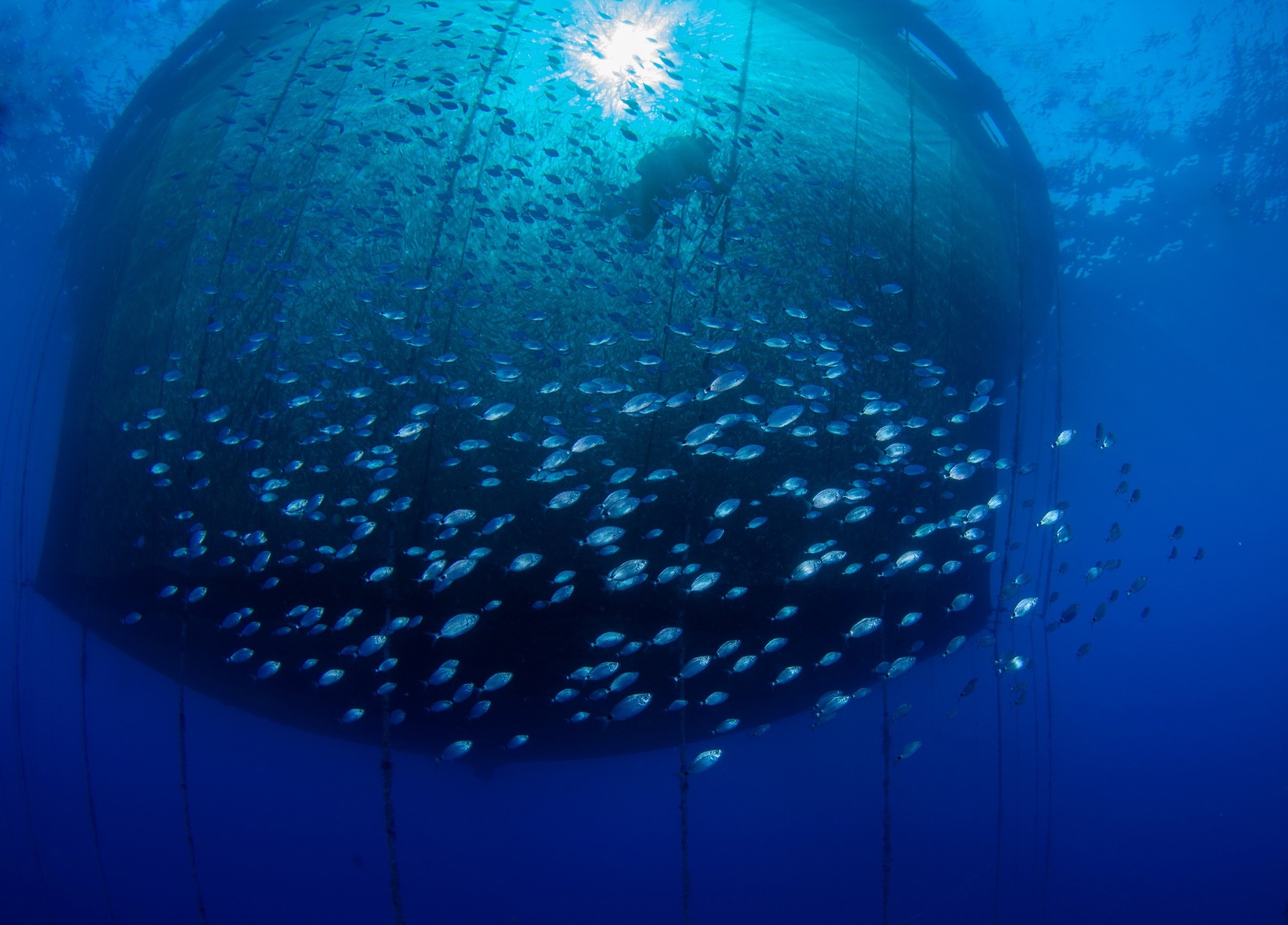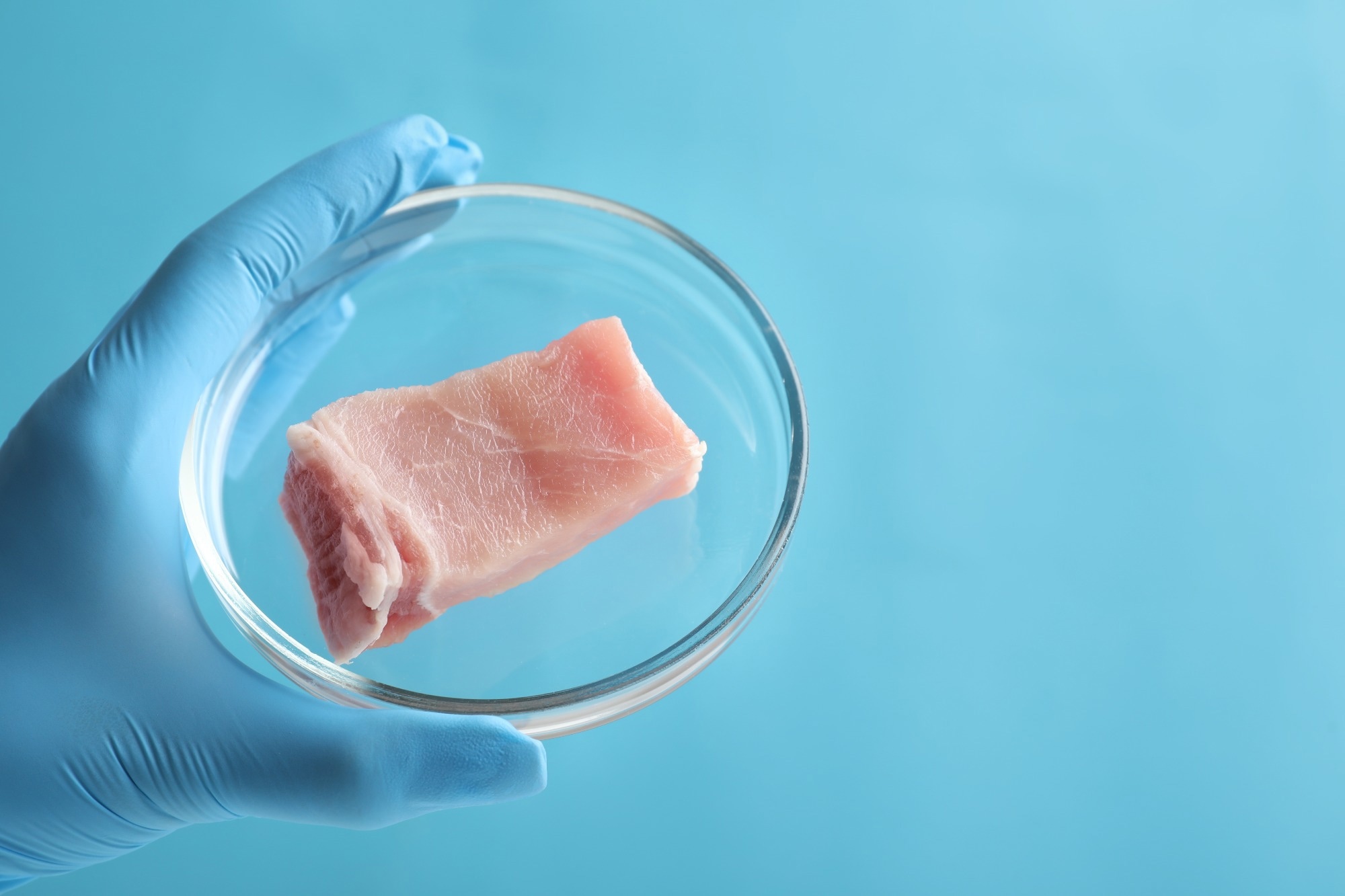Lab-grown, cultured foods offer a promising alternative to traditional food production. Although cultured meat is gaining traction and popularity, the future of cultured seafood remains uncertain. Lack of information and more challenging growth conditions makes cellular aquaculture not yet on par with lab-grown meat, yet it provides many solutions to modern seafood production's environmental, ethical, and nutritional issues.

Image Credit: Adnan Buyuk/Shutterstock.com
The Rise of Cellular Agriculture and Aquaculture
The demand for food to feed a growing human population is rising rapidly. This poses a stark contrast to the necessity to reduce the environmental footprint of human activity in the face of global climate change. A candidate solution that has emerged in recent decades is the possibility of laboratory-grown food.
Lab-grown food relies on the cultivation of a small number of animal cells grown in bioreactors for one to two weeks before being harvested. This method provides a potential solution to address not only environmental issues but also questions of animal welfare and public health since it relies less on live animals and provides the ability to control nutrients. As a result, lab-grown foods are attracting increasingly more interest both financially and scientifically.
In recent years, the possibility of cellular aquaculture, the production of seafood from cell to tissue, has also gained traction. Like cellular agriculture, cellular aquaculture may help address the same challenges observed in marine systems, from overexploitation to pollution. Additionally, with over 17% of global protein demand being from seafood, cellular aquaculture would provide much-needed support to sustain global food security.
Cellular aquaculture relies on techniques from biomedical engineering and aquaculture, and recent developments were reviewed in a study by Goswani et al. (2022). The authors discuss the mechanisms behind cellular aquaculture as well as the potential for cell-based seafood to offset many of the consequences of aquaculture.
However, the review highlights that despite holding extensive potential, cellular aquaculture remains in the infancy stage due to the limited information regarding cellular development in marine species, which is required to culture the right muscle cells, and optimize cell conditions before mass producing them in bioreactors.
Challenges to Modern Cellular Aquaculture
The study by Goswani et al. also described the challenges facing cellular aquaculture and the limitations that need to be addressed to match the progress of lab-grown meat, for instance. The primary challenge for cellular aquaculture remains the lack of appropriate muscle cell lines necessary to produce the initial cell cultures. For instance, very few cell lines for seafood are currently in use due to the risk of allergies that is common among seafood.

Image Credit: New Africa/Shutterstock.com
Additionally, the serum used to regulate cell growth, most commonly Fetal Bovine Serum (FBS), has numerous disadvantages, from limited supply to processing difficulties, hence limiting its usage in cellular aquaculture.
However, as is discussed in studies, including one by van De Valk et al. (2010), addressing the lack of suitable serum and other conditions for growth, such as suitable media, are critical gaps in current knowledge that remain to be bridged.
Due to the lack of cell lines and optimal in vitro conditions such as media and serum, cellular aquaculture has relied on resources from unsustainable, economically critical seafood species, which has resulted in limited success of cultured seafood to date. Nonetheless, since the lack of information limits the development of cultured seafood, research may address existing knowledge gaps and fulfil the potential for cellular aquaculture as an alternative, climate-resilient food production system.
Looking Ahead; Prospects and Potential of Cellular Aquaculture
In a 2019 study, Rubio et al. discuss cellular aquaculture's current and future progression. The authors review existing literature considering cell-based food production of crustaceans and mollusks and found a lack of information regarding cell cultivation. These findings echo the previous study, and the authors advocate for research in marine bioproducts to focus on key species to offer model cell lines and cultivation conditions.
The same study also discusses the future of cellular aquaculture and how many cellular properties of seafood can be harnessed to support cellular growth in vitro. In particular, fish cells and tissues possess unique physiological properties, from tolerance to hypoxia to high buffering capacity, that are advantageous to grow in lab conditions. Using these properties can help cells grow better or faster, even in suboptimal conditions.
Addressing the sparsity in information is a necessary step to progress cellular aquaculture. Once sufficient information and trials confirm the most effective cell lines and growth conditions, however, the cultured production of popular species, such as salmon, tuna, and shellfish, will alleviate the pressure on natural stocks. Combined with the ability to produce lab-grown meat, the environmental burden of human activities may be reduced.
The ability to produce cultured meat and seafood are critical steps in developing a more sustainable future. Other strategies include the development of artificial alternatives to animal products that are used every day in items ranging from pet food (e.g., pork in cat food) to oil (e.g., glycerin from pigs) or skincare (e.g., squalene). Synthesizing biological products from meat to seafood and other biological items will further limit human activity's environmental footprint on global biodiversity.
Sources:
- Clem, L. W., Moewus, L., & Sigel, M. M. (1961). Studies with Cells From Marine Fish in Tissue Culture. Experimental Biology and Medicine, 108(3), 762–766. https://doi.org/10.3181/00379727-108-27059
- Goswami, M., Shambhugowda, Y. B., Sathiyanarayanan, A., Pinto, N., Duscher, A. A., Ovissipour, R., Lakra, W. S., & Nagarajarao, R. C. (2022). Cellular Aquaculture: Prospects and Challenges. Micromachines, 13(6), 828. https://doi.org/10.3390/mi13060828
- Rubio, N. R., Datar, I., Stachura, D. L., Kaplan, D. L., & Krueger, K. (2019). Cell-Based Fish: A Novel Approach to Seafood Production and an Opportunity for Cellular Agriculture. Frontiers in Sustainable Food Systems, 3. https://doi.org/10.3389/fsufs.2019.00043
- Van Der Valk, J., Brunner, D., De Smet, K., Svenningsen, Å. F., Honegger, P., Knudsen, L. E., Lindl, T., Noraberg, J., Price, A., Scarino, M., & Gstraunthaler, G. (2010). Optimization of chemically defined cell culture media – Replacing fetal bovine serum in mammalian in vitro methods. Toxicology in Vitro, 24(4), 1053–1063. https://doi.org/10.1016/j.tiv.2010.03.016
Further Reading
Last Updated: Aug 8, 2023